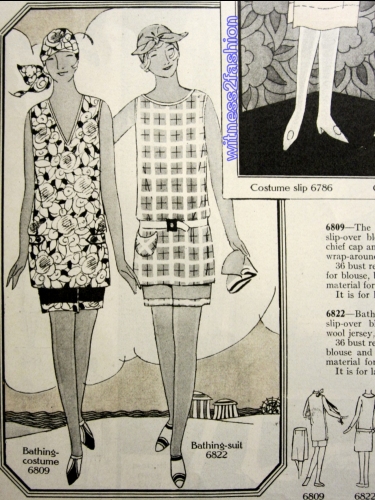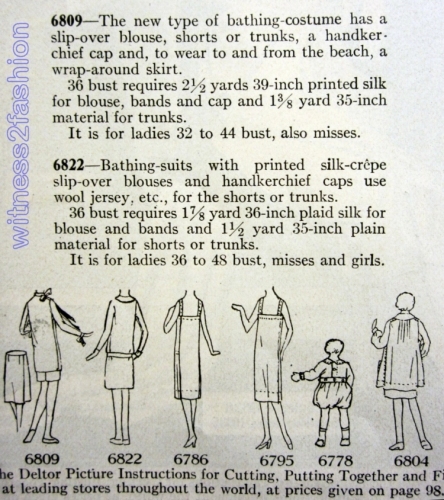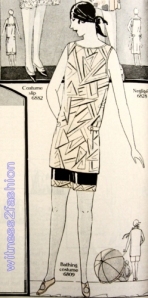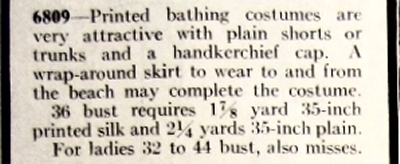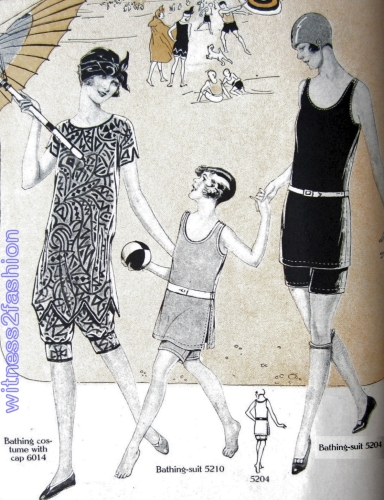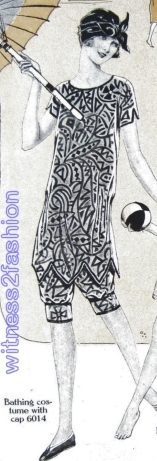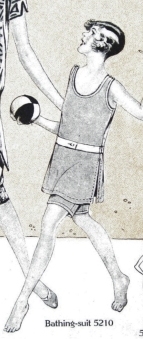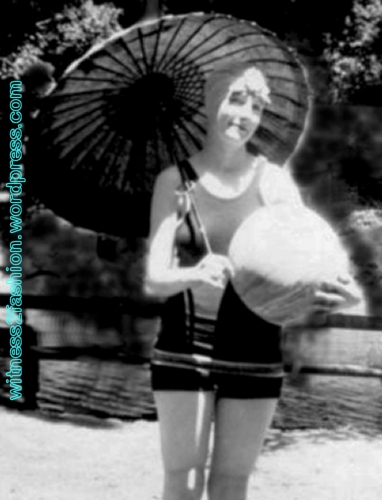I love Art Deco style, but I’m always glad that I didn’t have to be young in the 1920s, because I have exactly the wrong figure for 1920s dress styles. And then, one day, I looked at this photo of my mother in a 1920s bathing suit, and realized that she had exactly the wrong figure for the twenties, too.
But that was her era.
She was a teenager when the 1920s began, a popular, fun-loving, slightly wild girl (She eloped while still in high school.) She was the first girl in town to get her hair bobbed; she loved fabric shopping and sewing her own dresses, going dancing, and earning her own living in “The City” as a secretary. So I think it’s fair to say she was a flapper. 
“The boyish figure sans bust and curves and waistline is the ideal silhouette.” –Evelyn Dodge, Delineator magazine, July, 1925.
Underneath 1920s Fashions
Some women in search of the boyish figure bought “Boyshform binders,” or the “Flatter-U” brassiere or bandeaux, or wore flattening brassiere-and-girdle combinations called corselettes. [See Underpinning the Twenties: Brassieres, Bandeaux, and Bust Flatteners, and Underpinning the Twenties: Girdles and Corsets]
Others wore only one thin layer of light cotton or silk ‘combinations,’ or camisoles and bloomers, and rolled their stockings over elastic garters to hold them up, eliminating the girdle completely.
Some women wore even less.
Some Flappers Did Not Try to Reshape Their Figures
Writer Elspeth Huxley spent 1927 as a student at Cornell University. An animal husbandry major, she was matter-of-fact about sex, but she was surprised enough to record this incident:
“A teddy was the silk slip worn by some co-eds; others wore no underclothes at all. One, demonstrating a device she had thought of, peeled off her dress to reveal herself naked but for a strip of adhesive bridging the buttocks. ‘It improves my silhouette,’ she said.” – from Love Among the Daughters: Memories of the Twenties in England and America, by Elspeth Huxley; p. 244.
I would love to know more about the placement of that adhesive strip!
Never Assume
“Never Assume” is a rule of the costume shop. But I realize now that I have been assuming that young women who chose to wear next-to-nothing under their clothes were the ones who had a slim build, close to the twenties’ fashion ideal.
I confess I’m a little surprised, looking this photo of people in similar fashions, that some young women apparently chose not to wear a brassiere or bandeau, even if they had very un-boyish, unfashionable curves.

Two office workers, late 1920s. They demonstrate two, very different, contemporary attitudes toward underwear.
The girl on the right has what is usually thought of as an “ideal” nineteen twenties figure; her bust is so flat that I suspect she is wearing a breast binder. The girl on the left is obviously wearing nothing more restrictive than a chemise or combinations as underclothes. Her body is far from the 20s ideal, but she looks confident and completely at ease.
Seeing Through Clothes
Anne Hollander has demonstrated, in Seeing Through Clothes, how strong the influence of fashion is on our idea of beauty – to the extent that artists sometimes paint nudes as if they were wearing an invisible corset. This raises the question: Can we ever see through the eyes of another era?
Which of those girls was considered more attractive by the men of the late 1920s? Were other women scandalized when the big-breasted girl danced the Charleston? Or did many young women dress just as revealingly?
I think I know which one a man would be more likely to bring home to meet his mother – but – I shouldn’t assume!







